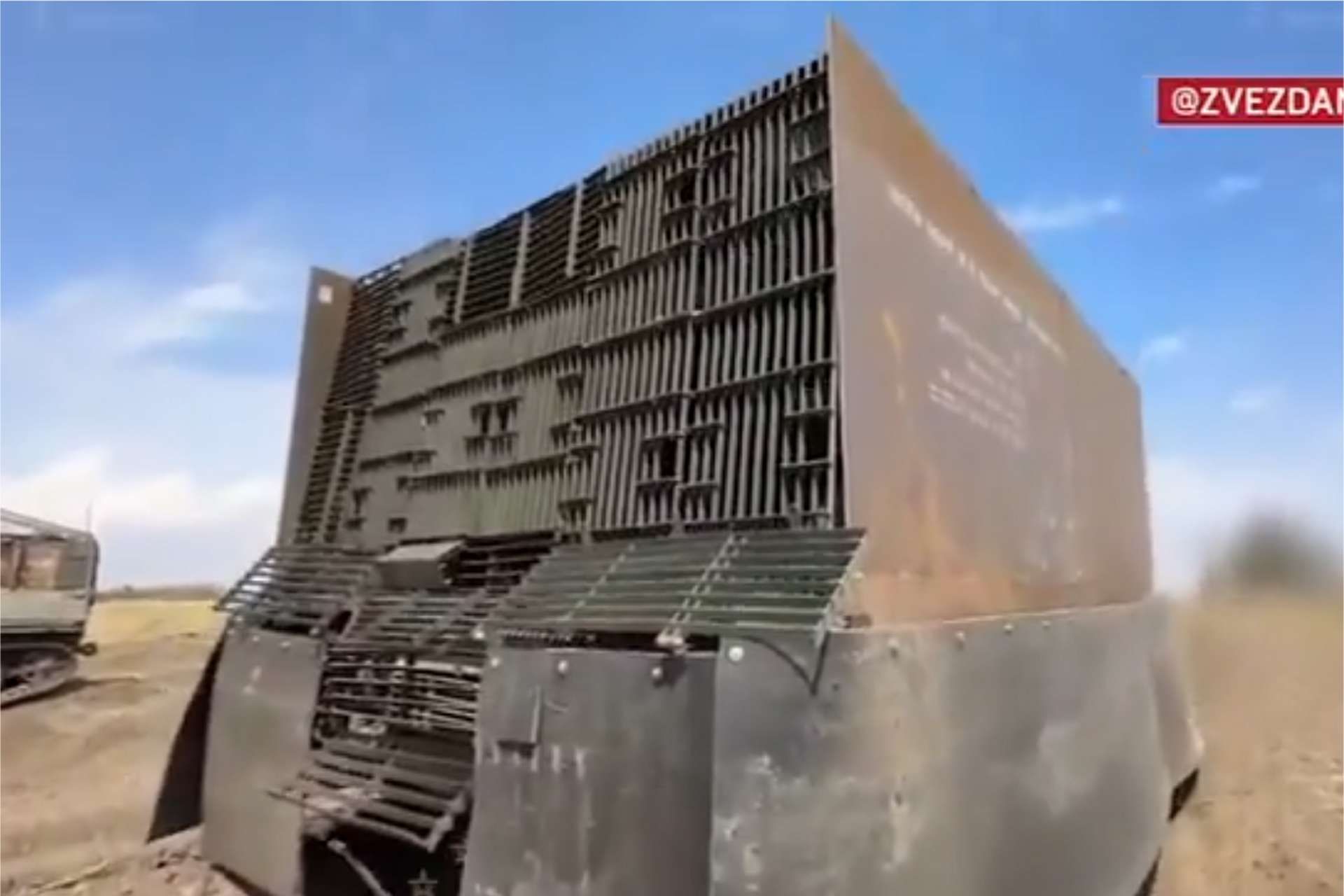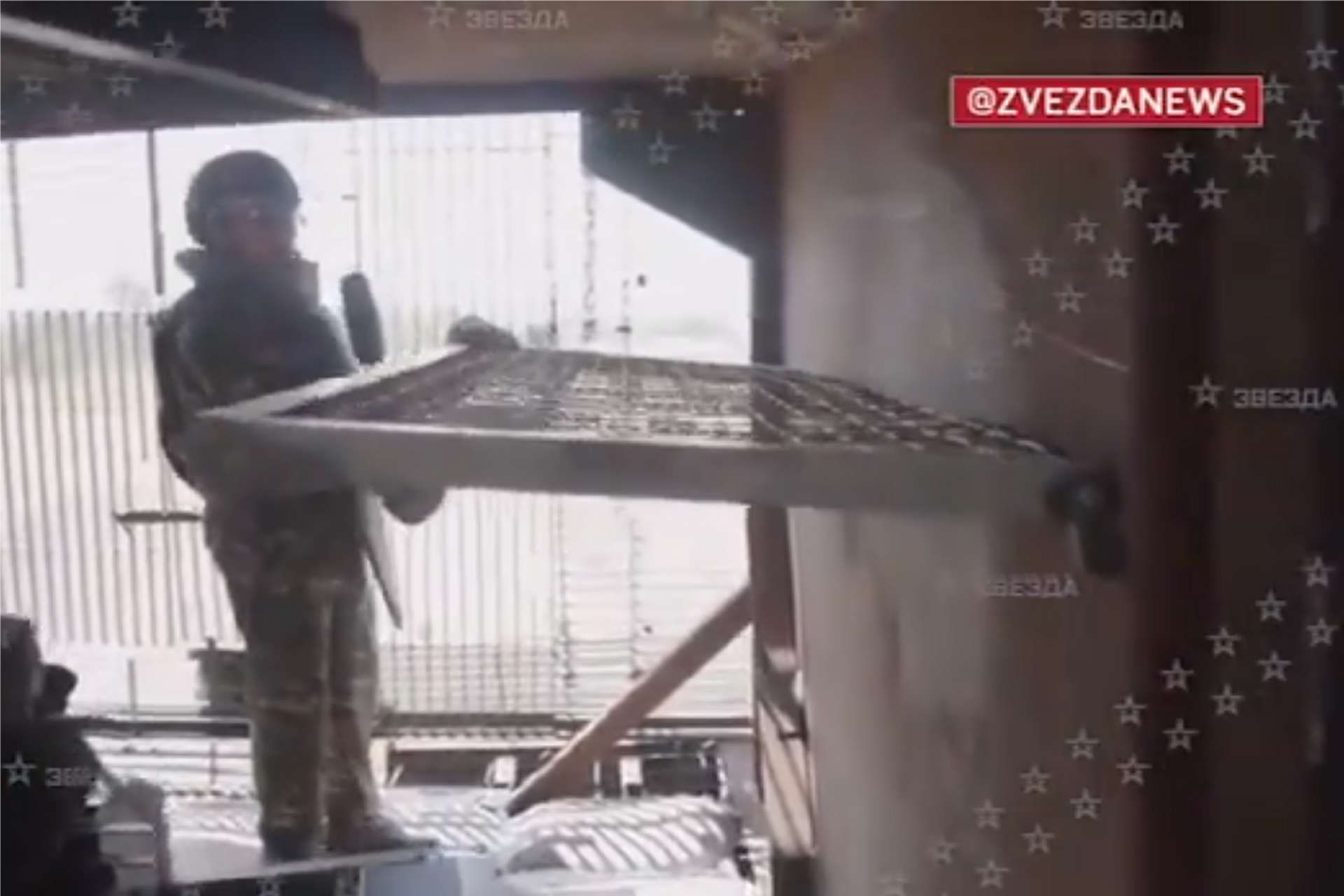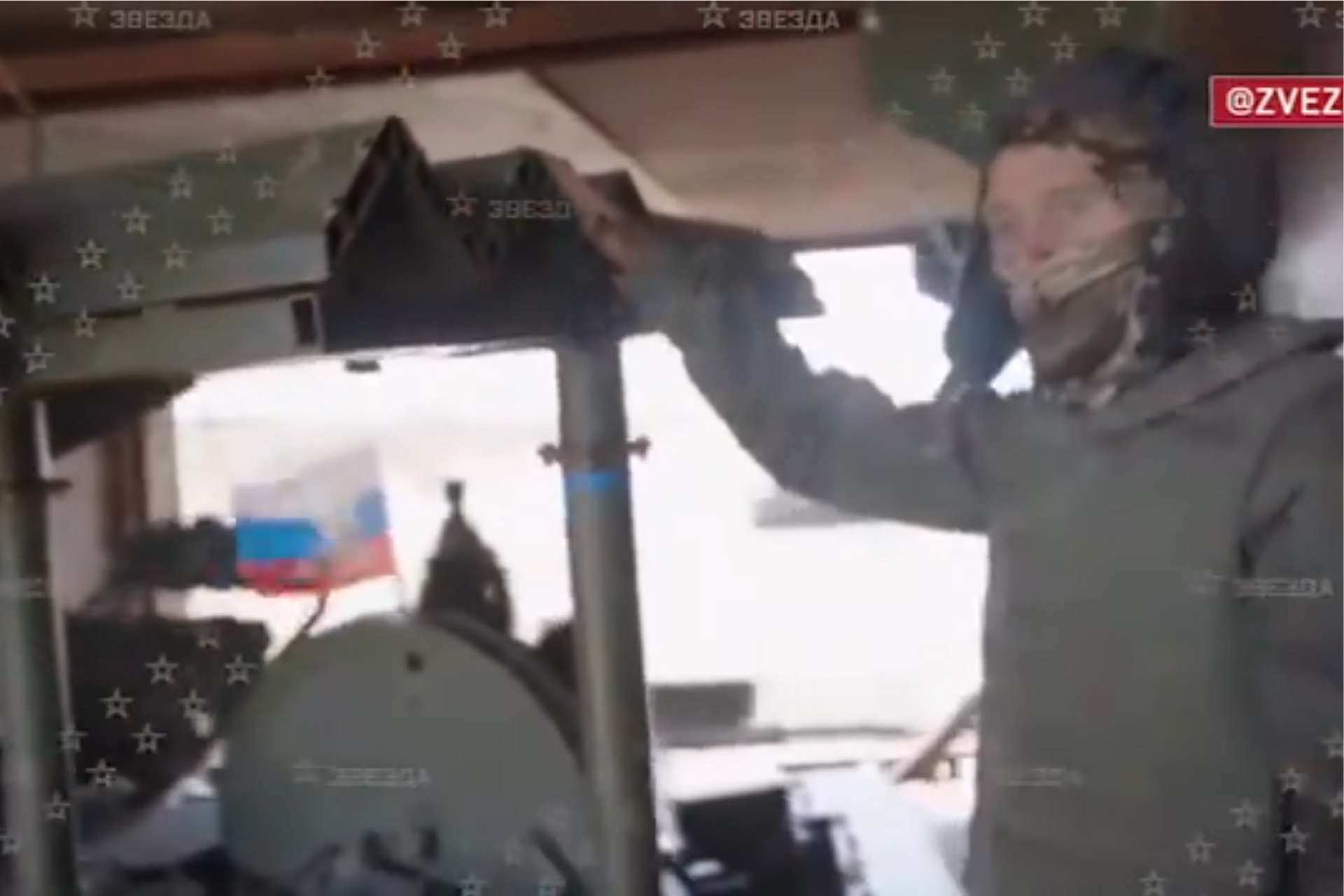Breaking News
Russia Has Built New Super Turtle Tank For Ukrainian Battlefield.
It had been some time since we last discussed the Turtle Tank on our website, and this morning, to our surprise, a new Russian Turtle Tank has made headlines. Indeed, across several Russian media outlets, we saw what could be described as a "Super Turtle Tank." But what exactly is a Super Turtle Tank, and does it address the issues of its predecessors? Let's explore together.
Follow Army Recognition on Google News at this link

The Super Turtle Tank has an impressive structure that enables it to offer several new features. (Picture source: Russian Media)
What is a Turtle Tank?
"Turtle tanks" are a relatively new development on the battlefield, first emerging in the context of the war in Ukraine. These modified Russian armored vehicles are equipped with a series of crude adaptations intended to protect the tanks from drone attacks—an ever-present danger in this modern conflict.
Turtle tanks are distinguished by the addition of metal cages, commonly referred to as "cope cages," that cover the top of the vehicle. These structures are designed to counter drones by disrupting their ability to inflict damage directly on the top of the tanks, which is particularly vulnerable. However, these modifications have significant drawbacks: they reduce the vehicles' visibility and maneuverability, making them slower and less effective in their primary combat role.

The rear view of the super Turtle Tank. (Picture source: Russian Media)
Why Turtle Tank?
The use of these tanks, along with other modified vehicles such as buggies and motorcycles, reflects the growing influence of drones on the battlefield. Drones, particularly first-person view (FPV) models, have become a formidable weapon for Ukrainian forces, who use them to attack Russian vehicles with great precision. Faced with this threat, Turtle Tanks act as "sponges" designed to absorb attacks to allow other vehicles to break through enemy lines.
However, this approach raises questions about the true effectiveness of these "cope cages." While they offer some protection against drones, they cannot compensate for the tactical shortcomings they introduce. Additionally, images show that despite these protections, many tanks equipped with such cages are still destroyed by precise attacks, highlighting the limitations of this strategy.
The concept of the Turtle Tank, although improvised and far from the effectiveness of a Main Battle Tank, can be adapted to several specific roles on the battlefield. These roles include self-propelled artillery, mine-clearing vehicles, and breaching vehicles. Here's how the Turtle Tank can adapt to each of these roles

The Turtle Tank even has a bed for the crew. (Picture source: Russian Media)
Self-Propelled Artillery:
In this role, the Turtle Tank could provide indirect artillery support. The additional protection against drones, though limited, allows the tank to stay behind the front lines and fire at long distances at enemy positions. Converting these tanks into self-propelled artillery platforms would compensate for their loss of mobility by keeping them out of direct engagements with the enemy while continuing to contribute to the war effort by providing strikes.
Mine-Clearing Vehicle:
Turtle Tanks are sometimes equipped with mine rollers or similar devices that allow them to neutralize enemy mines. The additional armor helps protect the vehicle against drone attacks, making it very useful for continuing demining operations. In this role, the tank acts as a "pioneer," clearing the way for following forces by securing roads and passages through minefields.
Breaching Vehicle:
Finally, Turtle Tanks can be used as breaching vehicles, opening passages through enemy defensive lines. With their reinforced armor, these tanks are designed to absorb blows from anti-tank weapons and drones as they plow through obstacles and fortifications. Although their effectiveness in this role is limited by reduced maneuverability, they can still play a crucial role in creating breaches for following armored and infantry units.
Super Turtle Tank
But why is this Turtle Tank dubbed a Super Turtle Tank? Simply because Russia has pushed the boundaries of its "improvements" even further. The resulting Turtle Tank is so large that it can accommodate a bed, an antenna, and even a whole next-generation cope cage inside the original cope cage. This Super Turtle Tank doesn't revolutionize the Turtle Tanks, which have yet to prove their effectiveness on the battlefield. However, progress is not made overnight, and perhaps one day a suitable role or innovative design will be found for these war machines—who knows, maybe one day.

The Turtle Tank is so large that a cage cope can fit into the space created. (Picture source: Russian Media)


























